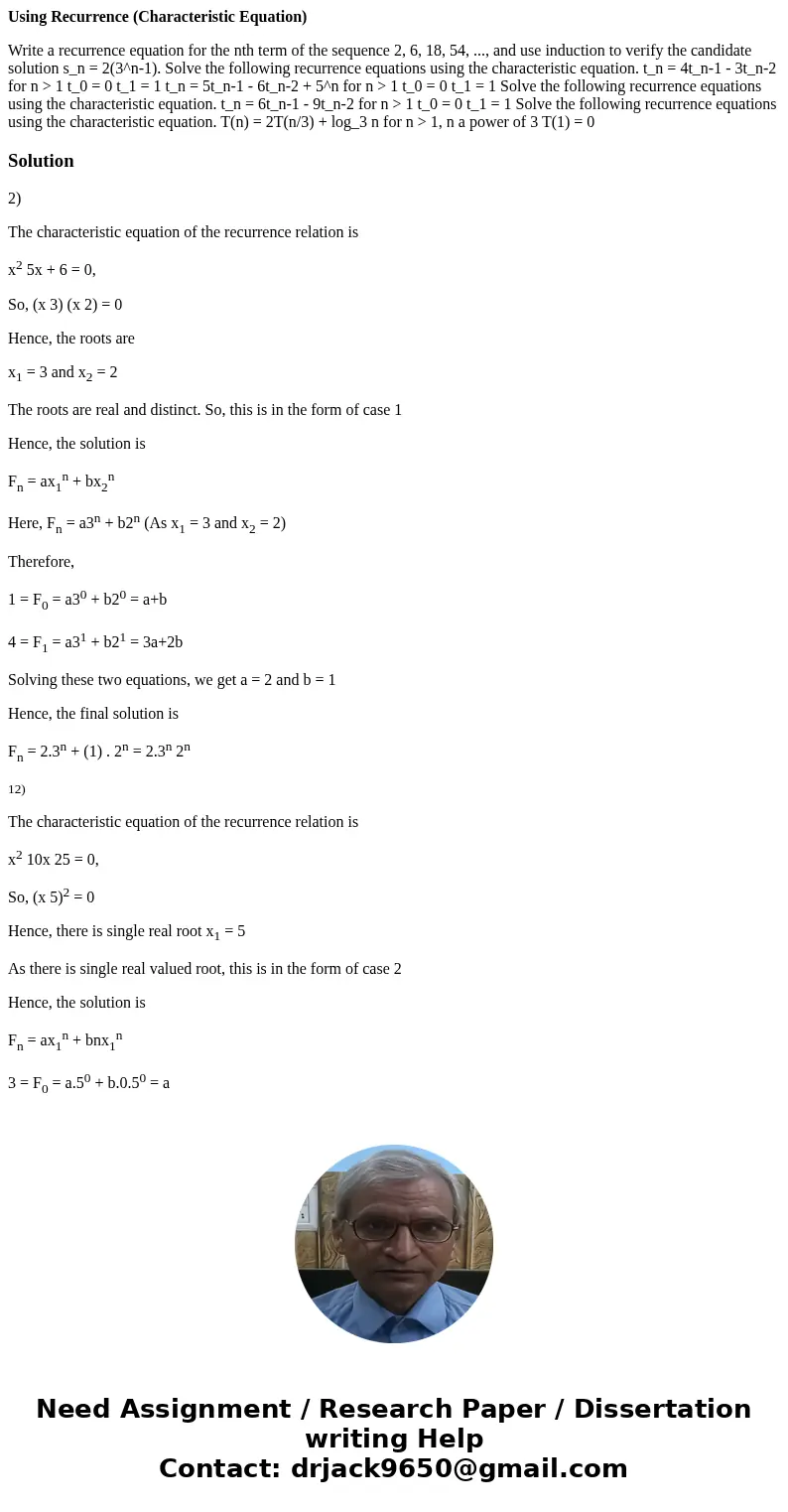Using Recurrence Characteristic Equation Write a recurrence
Using Recurrence (Characteristic Equation)
Write a recurrence equation for the nth term of the sequence 2, 6, 18, 54, ..., and use induction to verify the candidate solution s_n = 2(3^n-1). Solve the following recurrence equations using the characteristic equation. t_n = 4t_n-1 - 3t_n-2 for n > 1 t_0 = 0 t_1 = 1 t_n = 5t_n-1 - 6t_n-2 + 5^n for n > 1 t_0 = 0 t_1 = 1 Solve the following recurrence equations using the characteristic equation. t_n = 6t_n-1 - 9t_n-2 for n > 1 t_0 = 0 t_1 = 1 Solve the following recurrence equations using the characteristic equation. T(n) = 2T(n/3) + log_3 n for n > 1, n a power of 3 T(1) = 0Solution
2)
The characteristic equation of the recurrence relation is
x2 5x + 6 = 0,
So, (x 3) (x 2) = 0
Hence, the roots are
x1 = 3 and x2 = 2
The roots are real and distinct. So, this is in the form of case 1
Hence, the solution is
Fn = ax1n + bx2n
Here, Fn = a3n + b2n (As x1 = 3 and x2 = 2)
Therefore,
1 = F0 = a30 + b20 = a+b
4 = F1 = a31 + b21 = 3a+2b
Solving these two equations, we get a = 2 and b = 1
Hence, the final solution is
Fn = 2.3n + (1) . 2n = 2.3n 2n
12)
The characteristic equation of the recurrence relation is
x2 10x 25 = 0,
So, (x 5)2 = 0
Hence, there is single real root x1 = 5
As there is single real valued root, this is in the form of case 2
Hence, the solution is
Fn = ax1n + bnx1n
3 = F0 = a.50 + b.0.50 = a
17 = F1 = a.51 + b.1.51 = 5a+5b
Solving these two equations, we get a = 3 and b = 2/5
Hence, the final solution is
Fn = 3.5n + (2/5) .n.2n

 Homework Sourse
Homework Sourse